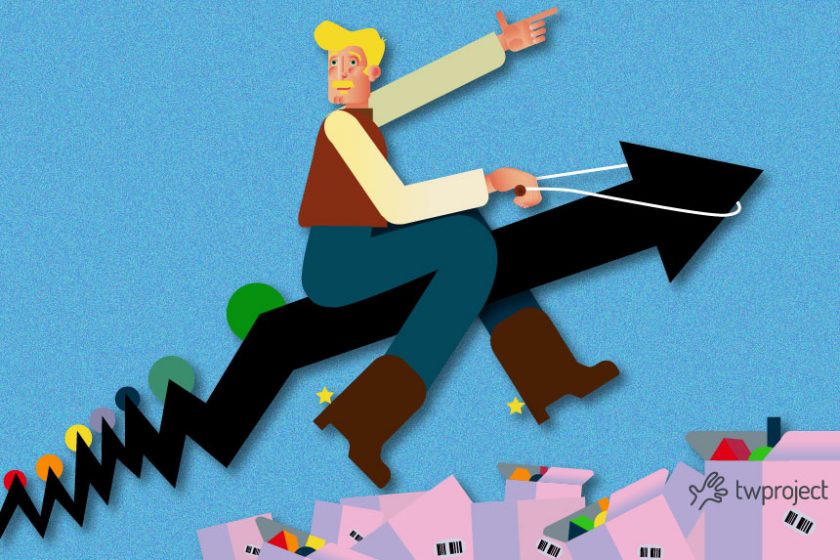CONTENT
Boosting your team’s work productivity is no impossible feat, but it does require practice and some good tactics.
The productivity of the working group in project management depends on the organization of work and on the use of techniques and tools for managing activities and time.
Especially if your team works from home, you are in need of such software. One of these effective tools is software for monitoring your remote team. Since employee wellbeing has a great impact on the work process and result, you need to use a tool that will boost worker performance productivity thanks to monitoring their wellbeing and work process. This way both your team and your business will be pleased and will bring great results
So, in this article we will take a look at 7 simple strategies to boost work productivity.
7 tips to increase work productivity
1. Focus on one activity at a time
When we focus on more than one task at a time, we tend to waste precious time as we switch from one task to another.
This can lead to some of the tasks needing to be completed or accomplished with inferior quality.
Many people think multitasking is the best technique, yet while this may seem productive, it rarely delivers the best results.
By focusing on one task at a time, their will complete it with a higher standard and quicker, allowing you to proceed to your next task effortlessly.
2. Take regular breaks
It may sound weird to suggest taking breaks regarding work productivity, but regular breaks help reduce stress and boost productivity.
Taking a break may seem like a waste of time, especially in the event of a close deadline.
However, neglecting to treat yourself to a few minutes of relaxation, can affect your overall productivity by inducing fatigue or exhaustion, thus hurting progress.
It is good to plan short breaks, 15 minutes every two hours, during the workday.
This will allow you to replenish your stamina, clear your mind and prepare for your next task.
3. Focus on the most important tasks first
You can stay more focused by focusing on the most challenging and time-consuming tasks before anything else.
It can be tempting to shy away from difficult or time-consuming tasks and focus on easy wins.
However, completing the most challenging projects early on can increase your motivation and focus for the rest of the day.
So learn to prioritize these most important tasks early in your workday or generally when you are most alert and active.
Some of us may work best in the morning, while others peak after lunch.
Knowing when you are most productive and then planning your daily schedule to make the most of these peak times is a great way to increase productivity.
4. Set small goals
Large tasks or projects can be somewhat daunting, and we often overestimate how long it will take to accomplish them.
A powerful tip is to split tasks into manageable, bite-sized milestones that pile up until project completion.
For example, emptying your inbox by answering e-mails during the day or filing required documents are small daily goals that every team member can set and achieve during the workweek.
Similarly, you can use these short goals as milestones to measure your progress toward a larger goal.

5. Delegate some tasks
Delegating does not involve offloading work you don’t want to do, but rather it is about ensuring that everyone is working on the tasks that best match their skills and availability.
As project manager, consider using delegation methods to split tasks among your team members.
Delegating some tasks can also allow you to focus on other duties that might be specifically assigned to you.
For example, if you have e-mails that you need to get back to, but a colleague can provide the same attention to detail, consider delegating the task to them. At the same time, you focus on relevant assignments that no one else can or is authorized to undertake.
A common mistake that undermines productivity is that we often take on work beyond our assignment or that others can do much more quickly.
6. Boost work productivity: use the tomato technique
Being more productive at work can depend on time management, and the “tomato technique” is a strategy you may find helpful in managing your time more efficiently.
Similar to scheduling breaks, the tomato technique involves using a timer, where you spend 25 minutes on a task.
During this time you focus only on the activity until the timer stops.
Then there is a five-minute break before starting with the new 25-minute block.
This strategy can be effective because it helps improve concentration by providing more time for focused, uninterrupted work with the promise of being able to take a break as soon as the timer sounds.
7. No meetings
Most meetings are known as big-time wasters, yet the habit of continuing to arrange them without asking questions still prevails.
Before organizing or confirming attendance at an upcoming meeting, ask yourself whether you can achieve the same goals through other channels, such as e-mail, phone call, etc.
And if you must hold or attend a meeting at all costs, there is evidence that stand-up meetings can lead to increased group enthusiasm, decreased territoriality, and better performance.
Another suggestion based on a study conducted by the Massachusetts Institute of Technology (MIT) is to have three days a week completely meeting-free.
Work productivity in these cases increased by 73 percent, worker satisfaction increased by 65 percent, and employee stress levels decreased by 57 percent.
Meetings are undoubtedly crucial for setting goals and gauging the organization’s performance.
However, daily meetings cause apathy, especially when scheduled unannounced, without preparation, and about trivial matters.
Finally, allow yourself and your team to apply these tips and use project management tools like Twproject to boost team work productivity and maximize professional and personal goals.


